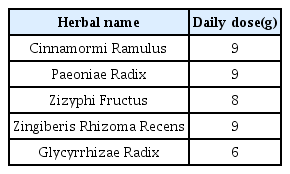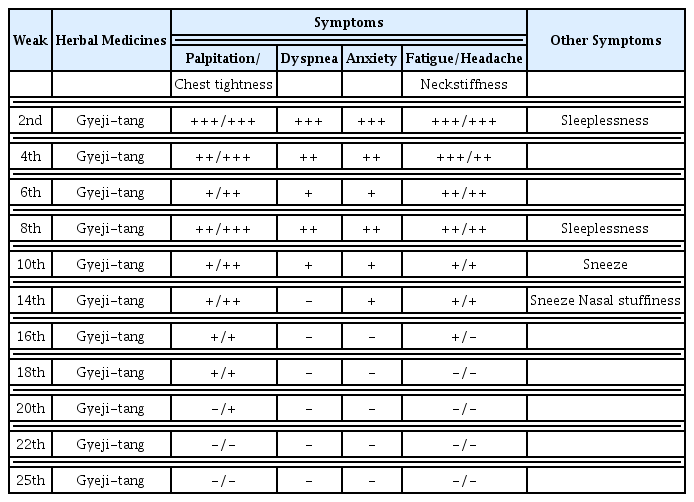A Case of Panic Disorder Patient Improved by Gyeji-tang(Guizhi-tang) Based on Shanghanlun Provision
Article information
Abstract
Objectives
The objective of this case report is to find a therapeutic effect of Gyeji-tang in panic disorder patients, based on Shanghanlun provision.
Methods
At patient’s first visit, we had conducted a medical interview in order to diagnose the physical and mental symptoms of the patient. A questionnaire called BAI had been also used to measure the degree of anxiety in panic disorder. After all the diagnoses had been done, the patient was allowed to take 120cc of Gyeji-tang, three times a day for 25 weeks. 25 weeks later, we conducted a second medical interview to compare with the initial treatment and to evaluate whether his physical and mental symptoms had been decreased or not. Likewise, the patient was asked to fill out the BAI questionnaire to measure the decline of anxiety degree.
Results
Based on Shanghanlun provision, the patient with panic disorder due to overwork was diagnosed as Tai-yang-bing. Considering that the patient was having dyspnea, 15th provision of Gyeji-tang was selected and administered for 25 weeks. After 25 weeks, we could have observed that the main physical symptoms such as palpitation, dyspnea, stifling, headache, and fatigue were moderately improved. Moreover, the BAI score, which was evaluated to measaure the degree of anxiety, was also decreased from 49 points to the level of normal condition, 16 points.
Conclusions
A 44 year old male patient who suffered from panic disorder due to overwork was allowed to take 15th provision Gyeji-tang for 25 weeks, based on Shanghanlun Provision. In results, the main physical symtpoms including dyspnea, palpitation, stifling, headache, and fatigue, and mental symptom such as extreme anxiety were all effectively improved.



